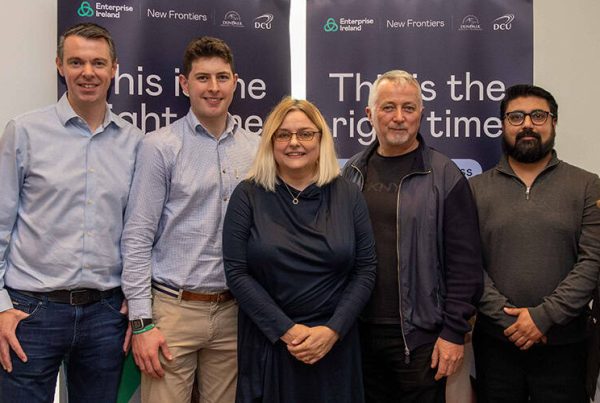
Generating sales leads is key to starting a business, but what’s the best way to connect with and convert potential customers who are not aware of your company?
For most start-ups the priorities are:
- Confirming that someone will buy your product or service;
- Building the first version of your product or service;
- Getting your first paying customer;
- Raising funding, or making enough sales to self-fund.
Every one of these priorities, even building your product, depends on acquiring customers. And you need to acquire customers in a repeatable way, so you know which inputs will generate more outputs (i.e. more customers).
Your goal should be to build a process for acquiring customers that is predictable, scaleable and automatable.
There are two main options for building a repeatable flow of sales leads – outbound lead generation and inbound lead generation. But before looking at your lead generation, there are two initial steps you need to take: identify who you are targeting and clarify what you are selling to them.
Who are you targeting?
Define your ideal customer profile
Should you go for a broad sweep of targets or focus narrowly on one niche? My suggestion is to narrow down your focus to a few specific kinds of people within one or two market sectors. This is because, as a startup, you have limited resources (money and people). So, it makes sense to focus those resources on one or two sectors rather than spreading them thinly across multiple sectors.
We also need a clear definition of who we are targeting when we start “prospecting” – the process of researching the names and contact details of potential customers. We’ll look at this again in a moment.
What are you selling?
Your value proposition
Your value proposition is the value a customer obtains when they use your product or service. You will be using this as part of your pitch in all your lead generation activities, so it’s important to get it right. If someone is left confused or unclear by what you’re selling then they won’t buy. And if customers are aware of your competitors then your value proposition needs to clarify why you are different and better.
See the article How to craft your Value Proposition – a tool and a formula for more information
Lead generation and lead conversion
Acquiring your first customers involves lead generation and lead conversion (converting leads into paying customers). Lead generation is problem number one for most start-ups.
There are three kinds of leads – warm referrals from existing contacts and customers; leads generated online; and leads you generate through “outbound” activities. We won’t concentrate on referral leads in our discussions because these are hard to scale up for a new startup. Instead we will concentrate on online (“inbound“) and “outbound” lead generation.
Outbound lead generation
For a lot of start-ups outbound lead generation should be the first area to look at. This is because it requires less lead-in time than inbound/online lead generation. It is also because you can target the lead generation efforts more precisely and, in the case of B2B, it may produce results faster.
This doesn’t mean that I think you can ignore online lead generation activities. Instead, I suggest that you kick off outbound lead generation while ramping up your inbound lead generation in parallel.
Outbound lead generation consists of:
- Using your target customer definition to research a list of prospects. You can use a combination of Google, LinkedIn and online list sources to compile these contact details.
- Review the value proposition or pitch you plan to use specifically for this outbound lead generation campaign.
- Draft your introductory emails – short and snappy emails that introduce your company and ask for a call or meeting. Don’t try to sell in these emails, don’t use graphics or logos and don’t include attachments. Keep the text to a bare minimum to obtain a response. You should expect to send out a first email and three or four follow-ups in order to make contact.
- Prepare follow-up materials for interested prospects – a presentation or document that you can send them if they express interest in your pitch.
- Send the emails in batches – there are a number of tools that plug into Gmail and Outlook that can automate this process.
- Manage all responses immediately – if they are positive, make sure to schedule a follow-up call or demo straight away.
- Qualify the lead – during a call or demo make sure they are actually interested in your type of product, have the ability to buy it and have a time-frame in mind. If they are not qualified, then get them off your list and move on to the next prospect.
- Handle objections and questions – if a lead is qualified, handle any questions or objections they have, moving them through to the sale.
A lot of the steps in this process can be automated, from tools to help with prospecting and email automation through to CRM systems for recording calls and follow-ups.
And you can monitor four or five key weekly metrics to keep yourself on track – for example number of new contacts researched this week, number of leads added to pipeline, number of prospects converted to opportunities and so on.
Inbound lead generation
Inbound lead generation means using a combination of your website, blog, social media and content to generate inquiries and sales leads. Online leads should account for a third or more of your leads in the longer term – four out of the top five sources of leads are online:
- corporate website
- advertising (banner ads, search engine marketing)
- social media (including videos)
The first step when looking at online lead generation is to ensure your website pages include clear calls to action (CTAs). For example, “Register for a free trial” or “Download our white paper”. Each of these calls to action should link to registration pages known as landing pages.
You also need to ensure that your website clearly communicates who you are targeting and your value proposition. It should act like your best sales-person, 24 hours a day, 365 days a year.
Once you are sure that your website is ready to capture leads, you can focus on driving increasing numbers of relevant visitors to the website (traffic) and getting people to register on the site for content or for demos (conversion).
Once visitors have registered, you treat these registrations as leads and define the most efficient way to convert them to customers. This could be through direct phone or email contact, or by encouraging them to sign up for a trial online.
The main tools to drive traffic are:
- Content (e.g. documents, presentations, videos, graphics)
- Pay-per-click ads (PPC)
- Search Engine Optimization (SEO)
- Social Media
- Email marketing
- Online paid ads/display ads
Your start-up needs to focus on generating leads and acquiring customers. You have two main options for generating leads, inbound and outbound lead generation. I don’t advise that you try to choose one or the other – you need both. There are lots of great resources online to help, from guides on landing page design through to tools for automating outbound lead generation. Getting it right will take focus and a little trial and error. The reward will be a steady stream of sales leads and new customers, delivering revenue and increasing the value of your company.
About the author
 Michael White
Michael White
Michael White is an Enterprise Ireland mentor and Managing Director of Motarme, a sales and marketing automation startup, which he co-founded in 2011. Michael has delivered numerous seminars on startup marketing for the New Frontiers programme and NISP Connect.
Michael is a specialist in complex B2B technology marketing and lead generation, with a previous background in software development and product management. He has successfully developed and launched enterprise technology and software products in sectors including finance, telco and government. He has managed technology promotion campaigns across Europe and in the US, and has managed enterprise system implementations in the UK, Holland, Sweden, South America, the Caribbean and Africa.
Recent articles

Founder Perspectives: Lessons From Building Businesses In Sustainability

Tech Startups In The Age Of AI: Alumnus Paul Savage On Speed, Quality & Risk

Fourteen Startup Founders Graduate From Phase 2 Of New Frontiers In Tallaght

Eleven Founders Graduate From New Frontiers In The Border Mid-East Region

Laying The Right Groundwork Helps Startups Prepare For Export Success

Startup In Dublin: Learn More About New Frontiers On TU Dublin’s Grangegorman Campus

Michael Furey On The Success Of Ronspot: “The Most Important Thing Is Research”

 Michael White
Michael White
